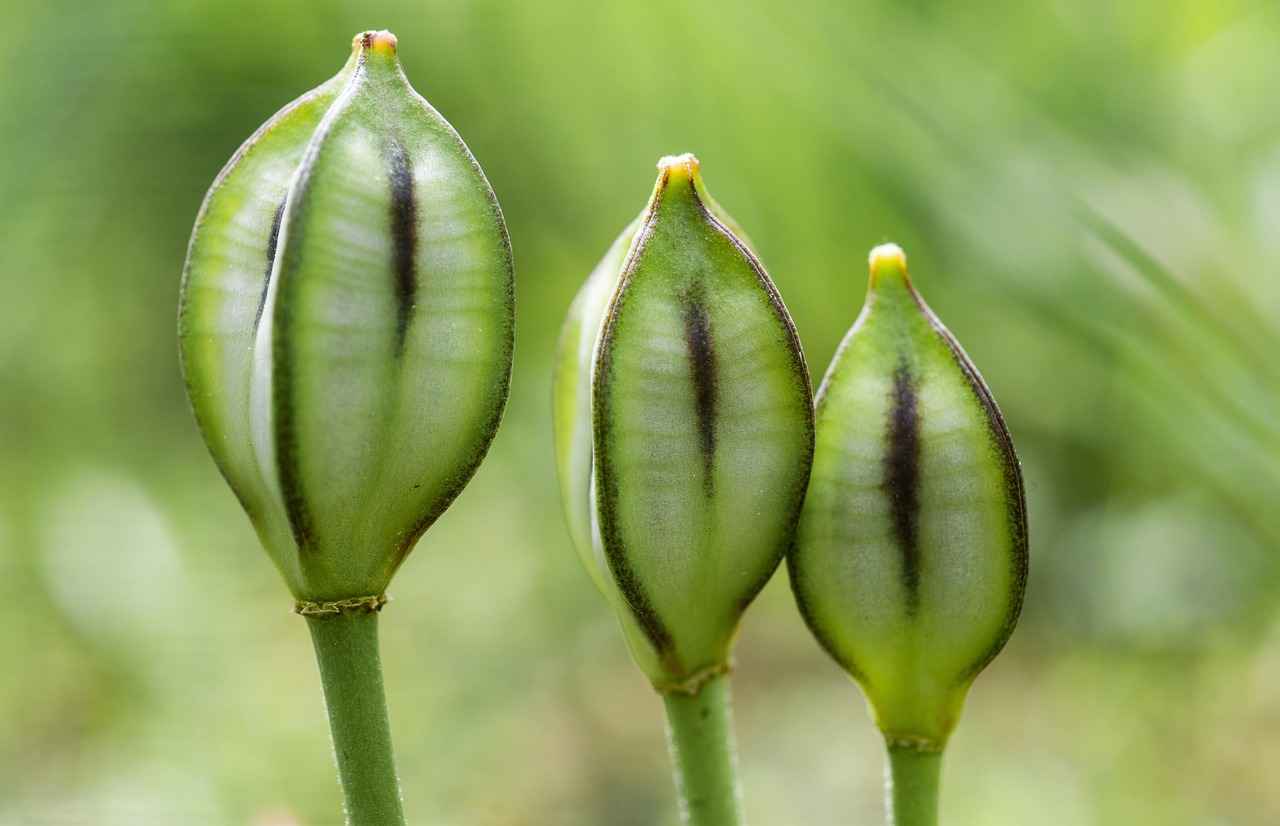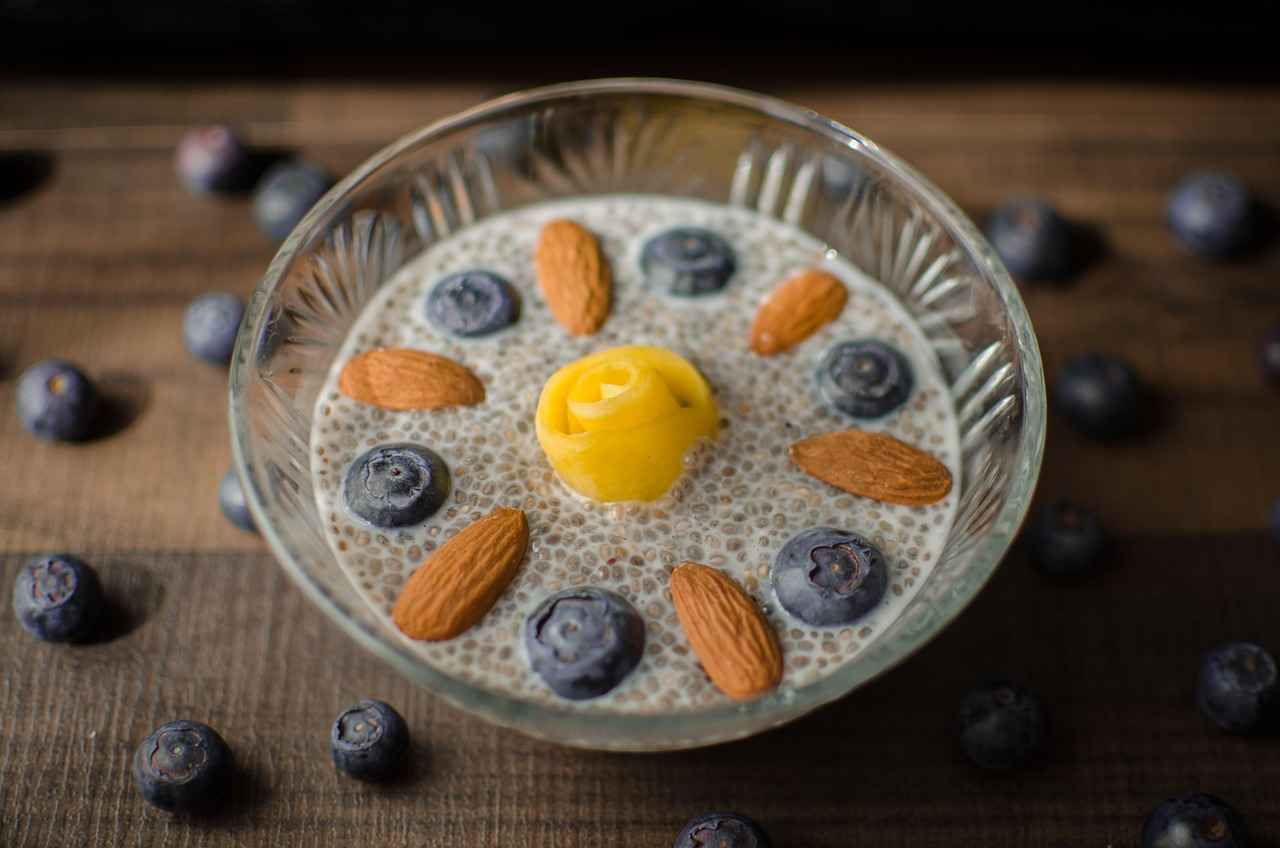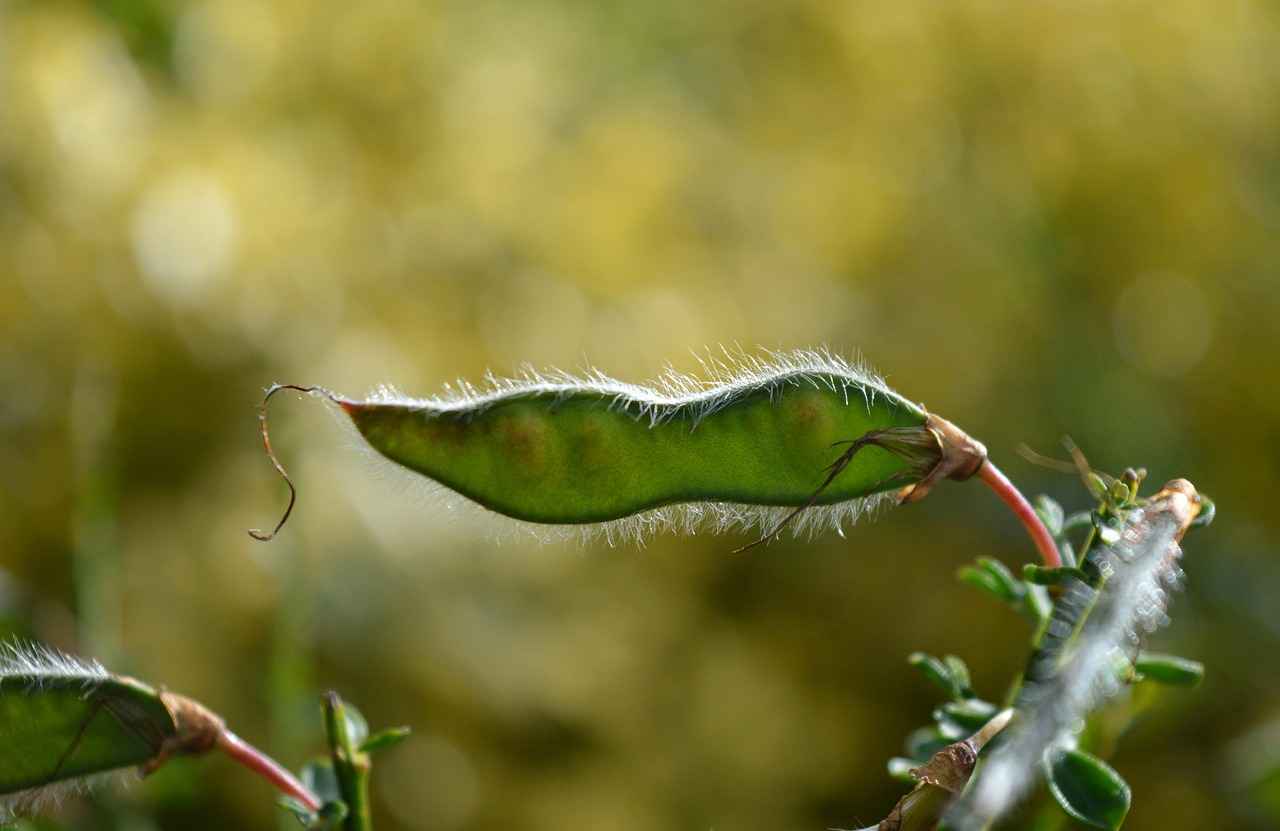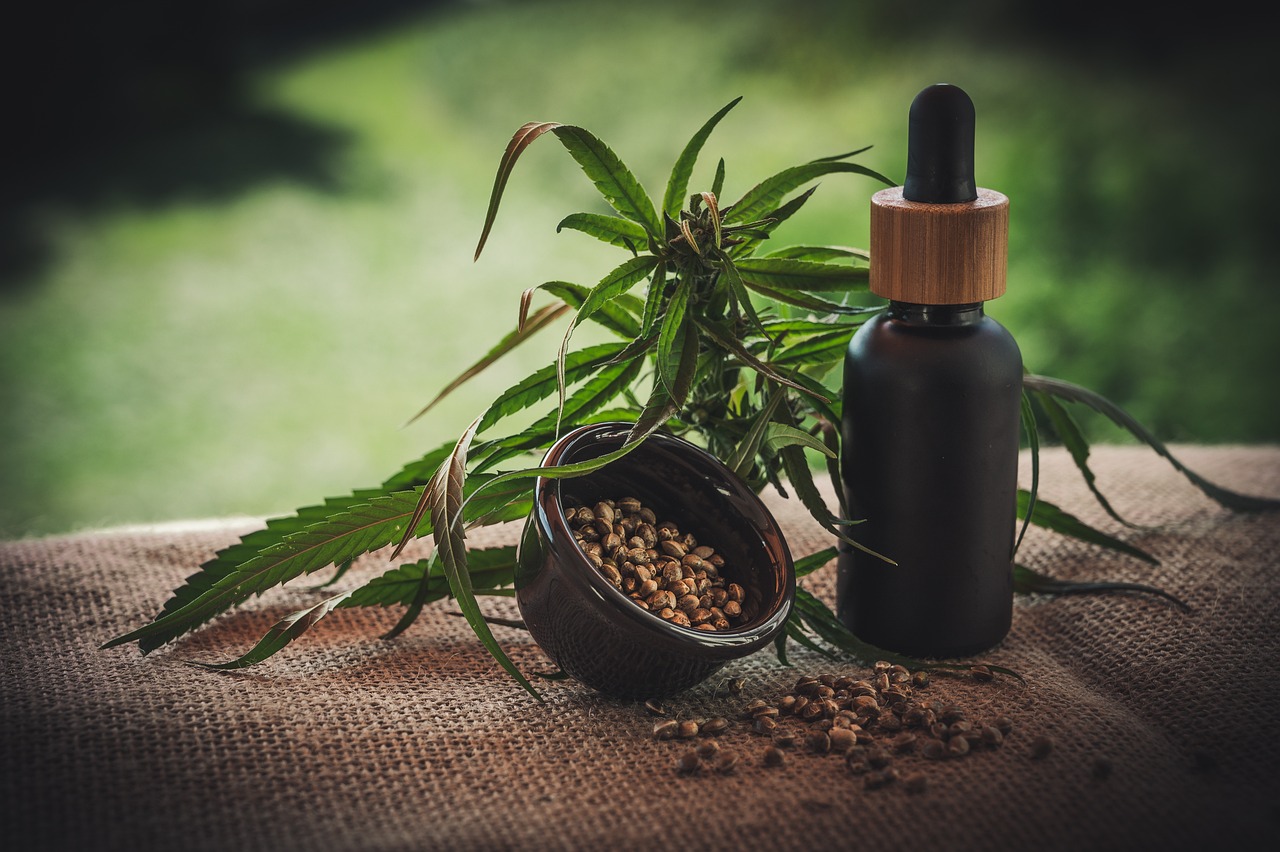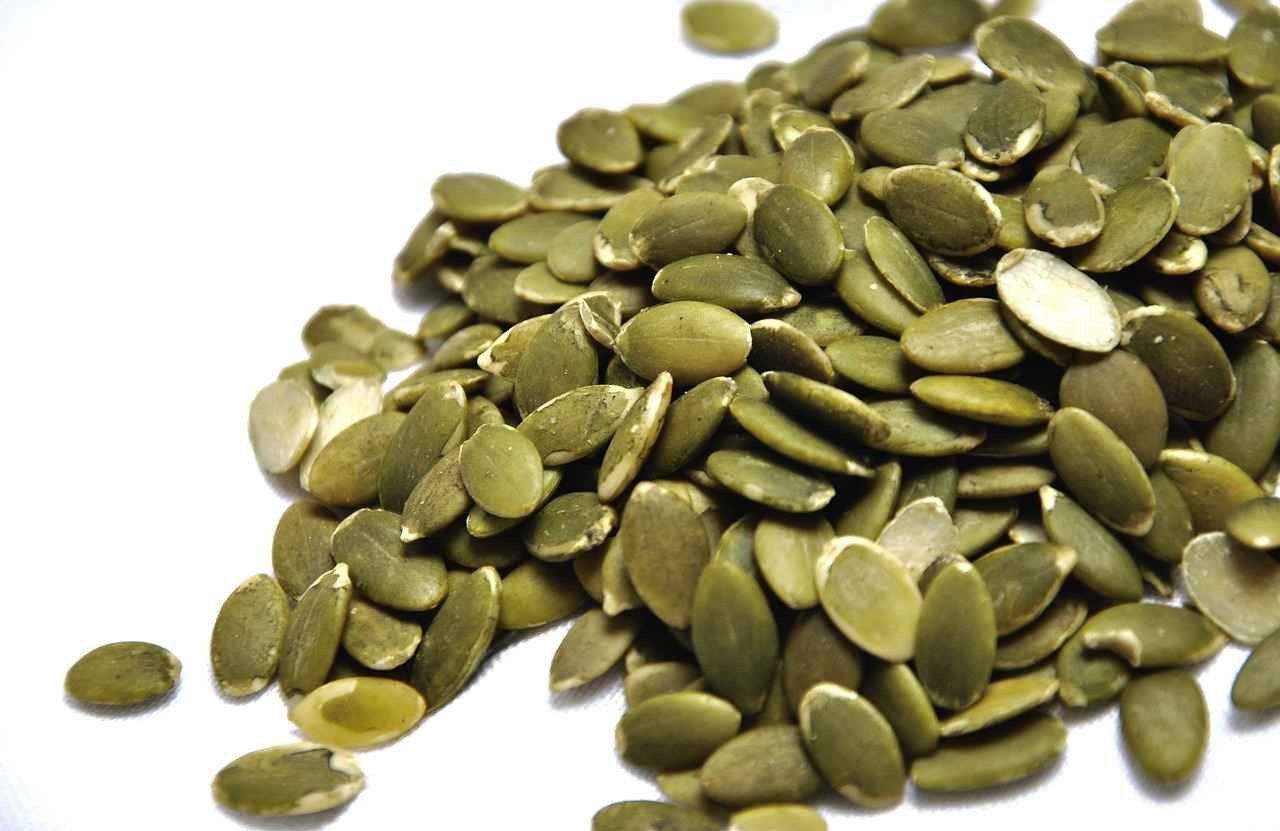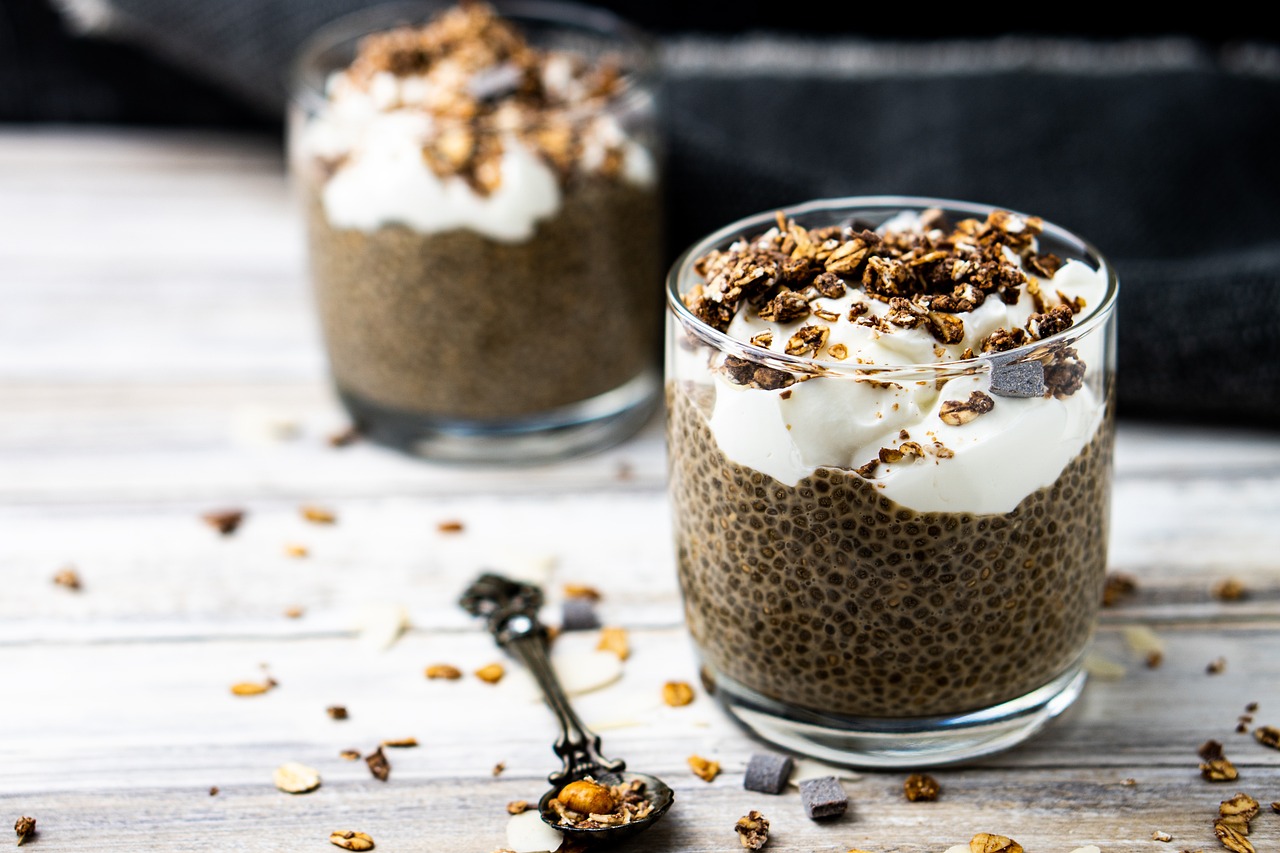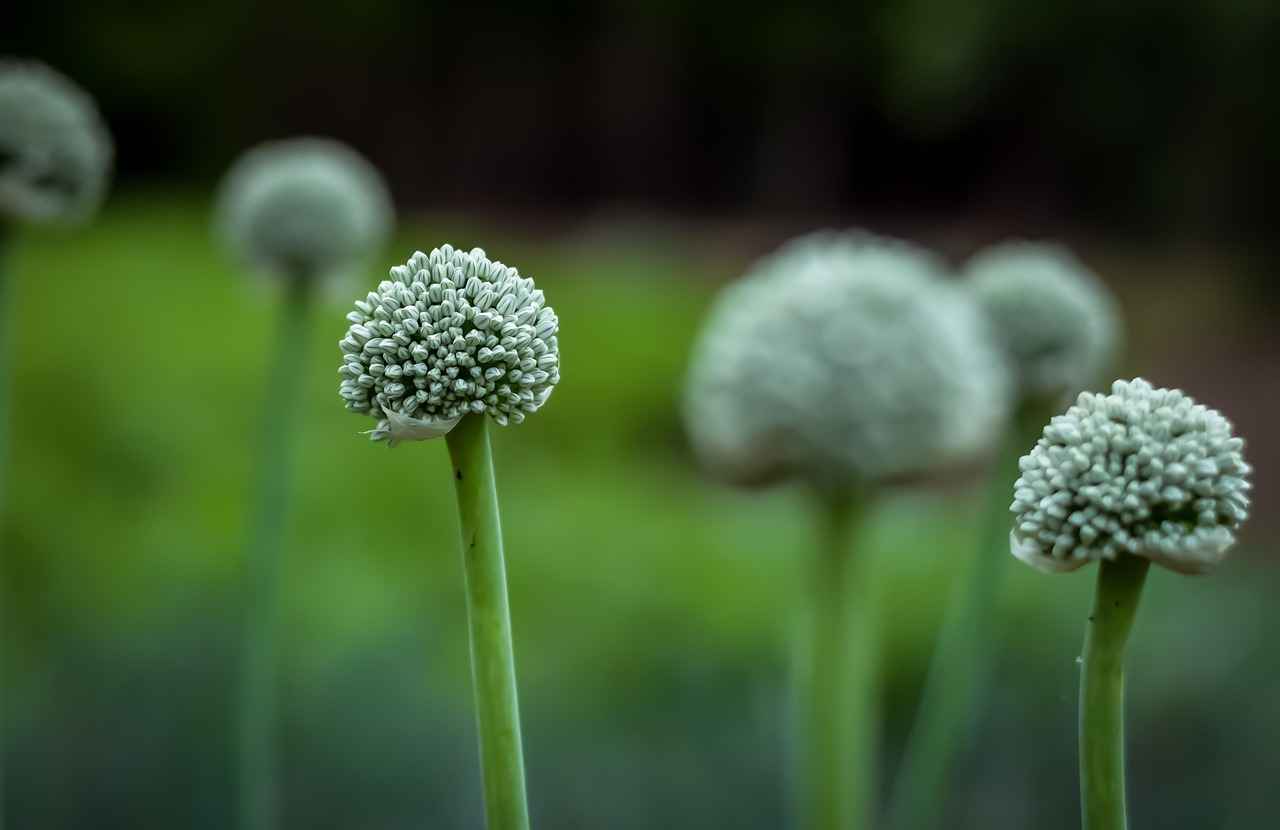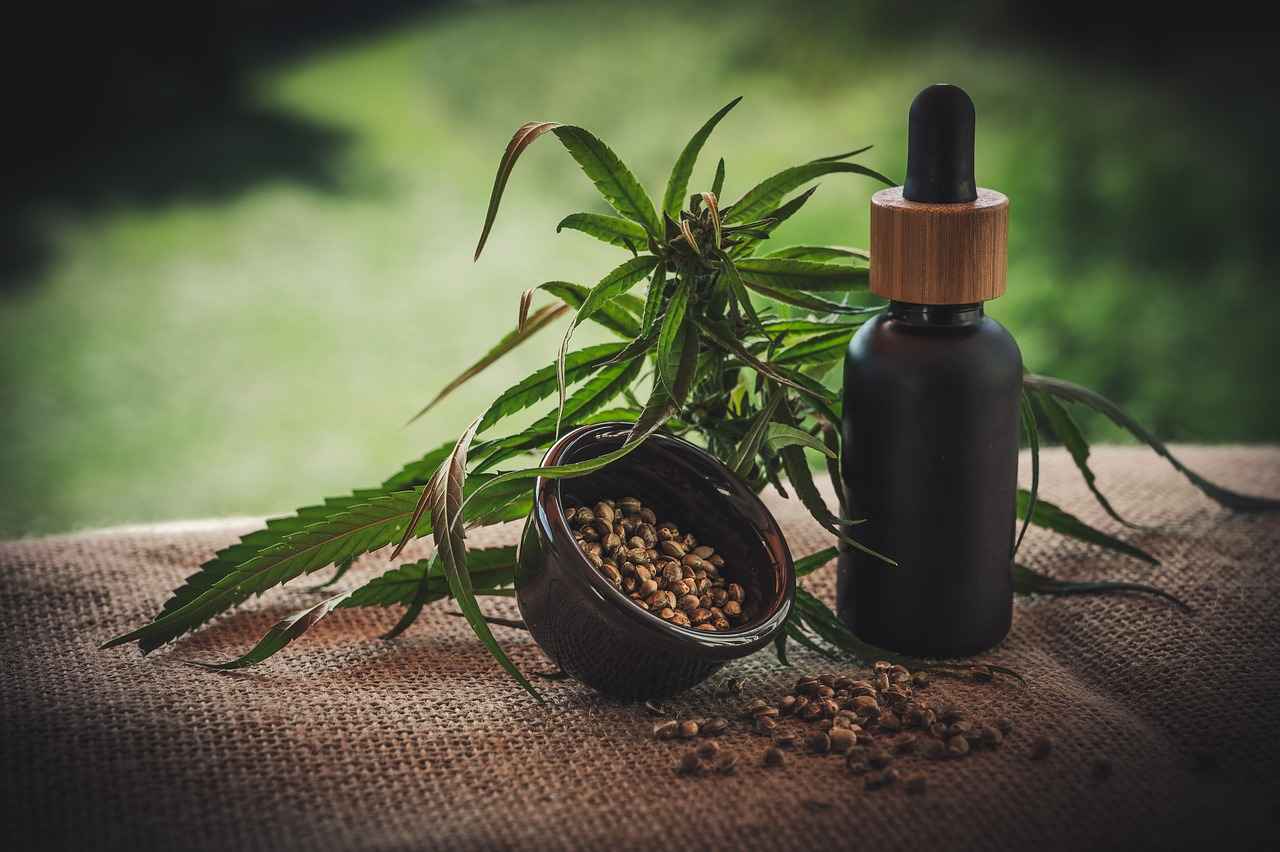Chia seeds are gaining popularity as a superfood due to their numerous health benefits and versatility in cooking. These tiny seeds, derived from the Salvia hispanica plant, are rich in essential nutrients, making them an excellent addition to a well-balanced diet. In this article, we will explore the versatile ways to incorporate chia seeds into your meals, their nutritional benefits, and practical tips for maximizing their potential.
Chia seeds are small, black seeds that are packed with a variety of nutrients. They are an excellent source of omega-3 fatty acids, which are beneficial for heart health. Additionally, chia seeds are high in fiber, providing digestive support and aiding in weight management. They also contain a good amount of protein, making them a great option for vegetarians and vegans looking to increase their protein intake.
Starting your day with chia seeds can enhance your breakfast’s nutritional profile. Here are some creative ways to incorporate them:
- Chia Seed Smoothies: Adding chia seeds to smoothies not only thickens the texture but also boosts the nutritional content. Combine your favorite fruits, leafy greens, and a tablespoon of chia seeds for a healthy breakfast.
- Chia Seed Pudding: Mix chia seeds with your choice of milk (dairy or plant-based) and let it sit overnight. In the morning, top it with fruits and nuts for a delicious and filling meal.
Chia seeds are not just for breakfast; they can also enhance your lunch and snacks. Consider these ideas:
- Salads: Sprinkle chia seeds on salads for added crunch and nutrition. They pair well with a variety of dressings and ingredients.
- Energy Bars: Incorporate chia seeds into homemade energy bars for a nutritious snack that keeps you fueled throughout the day.
Yes, chia seeds can be a fantastic addition to baked goods! They provide moisture and can act as a binding agent. Here are some tips:
- Chia Seed Substitutes: If you’re looking to replace eggs in recipes, mix 1 tablespoon of chia seeds with 2.5 tablespoons of water and let it sit for a few minutes to create a gel-like consistency.
- Popular Baked Goods: Add chia seeds to muffins, bread, or pancakes for a nutritious twist.
While chia seeds are generally safe, some individuals may experience digestive issues, especially if consumed in large quantities. Here are some considerations:
- Moderation is Key: Stick to recommended serving sizes, usually around 1-2 tablespoons per day, to avoid any digestive discomfort.
- Consulting with a Healthcare Professional: If you have specific dietary restrictions or health concerns, it’s always best to consult with a healthcare provider for personalized advice.
In conclusion, chia seeds are a versatile and nutrient-dense addition to any diet. By exploring various ways to incorporate them into your meals, you can enjoy their health benefits while enhancing the flavor and texture of your food.

What Are Chia Seeds and Their Nutritional Benefits?
Chia seeds are small, nutrient-dense seeds derived from the Salvia hispanica plant, native to Mexico and Guatemala. These tiny black seeds have gained immense popularity due to their remarkable health benefits and versatility in culinary applications. Packed with essential nutrients, chia seeds are an excellent addition to a balanced diet.
One of the most significant attributes of chia seeds is their high content of omega-3 fatty acids, which are crucial for heart health. These healthy fats help reduce inflammation, lower cholesterol levels, and support brain function. In addition to omega-3s, chia seeds are an excellent source of dietary fiber, which aids in digestion and helps maintain a healthy weight by promoting a feeling of fullness.
Incorporating chia seeds into your meals can also boost your protein intake. With about 4 grams of protein per ounce, they are an excellent plant-based protein source, making them a great option for vegetarians and vegans. Furthermore, chia seeds are rich in essential minerals such as calcium, magnesium, and phosphorus, which are vital for maintaining strong bones and overall health.
Another unique feature of chia seeds is their ability to absorb liquid and form a gel-like consistency. This property not only enhances their texture in various dishes but also helps to keep you hydrated. When chia seeds are soaked in water or other liquids, they can expand up to 10-12 times their original size, making them an excellent thickening agent for smoothies, puddings, and sauces.
To maximize the nutritional benefits of chia seeds, it is important to consume them in their whole form. Ground chia seeds can lose some of their nutritional value, so it’s best to use them as they are. Additionally, soaking chia seeds before consumption can enhance their digestibility and nutrient absorption.
In conclusion, understanding the nutritional profile of chia seeds can empower you to make informed dietary choices. Their rich content of omega-3 fatty acids, fiber, and protein, combined with their versatility in cooking, makes them a valuable addition to any diet. Whether you sprinkle them on salads, blend them into smoothies, or use them in baking, chia seeds can help boost your overall health and well-being.
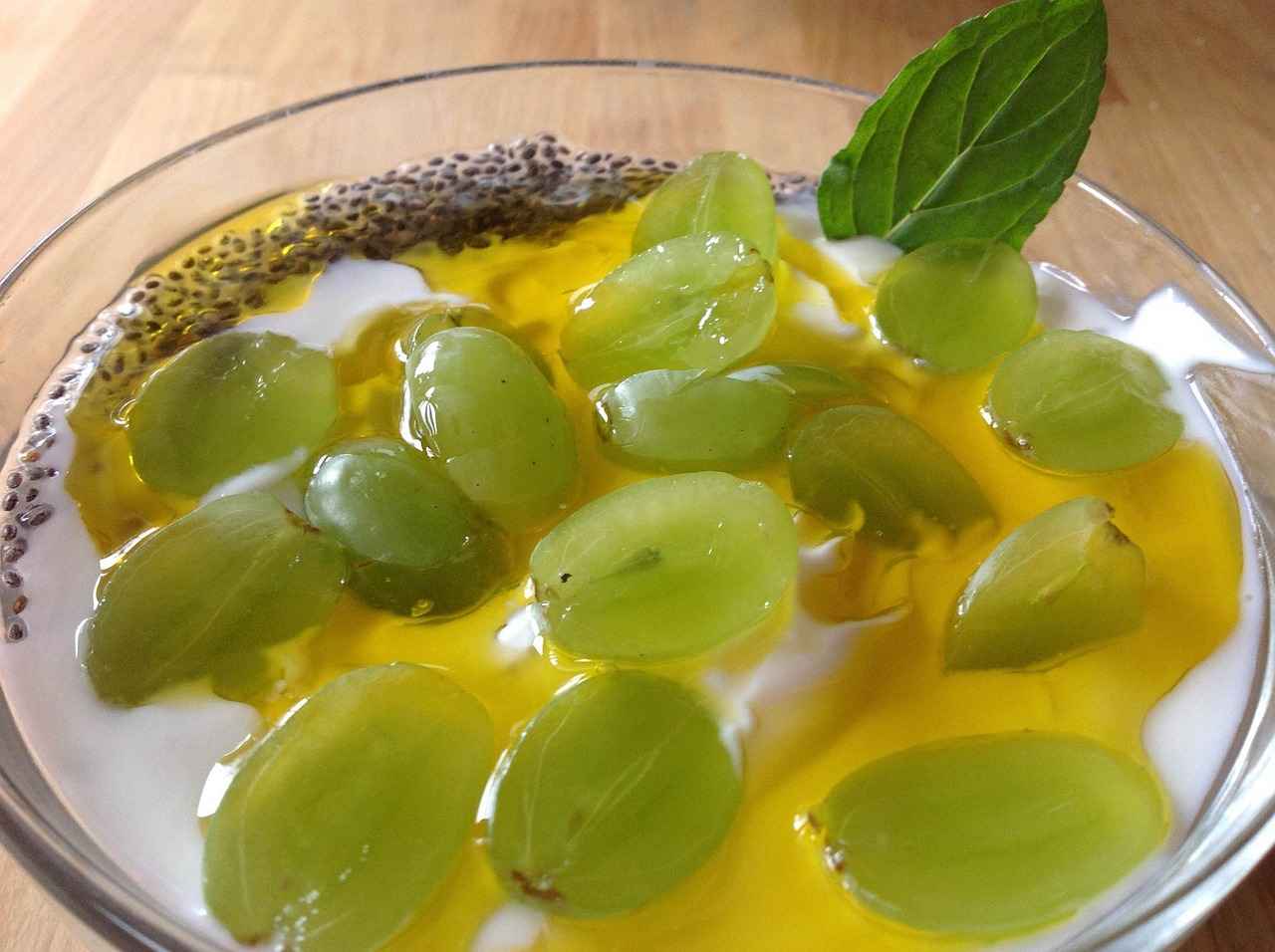
How to Add Chia Seeds to Your Breakfast?
Incorporating chia seeds into your breakfast is an excellent way to enhance its nutritional value. These tiny seeds are not only rich in omega-3 fatty acids, fiber, and protein, but they also offer a unique texture and versatility that can transform your morning meals. Here are some creative and delicious ways to include chia seeds in your breakfast routine.
- Chia Seed Smoothies: Adding chia seeds to your morning smoothie is a simple way to boost its nutritional profile. The seeds absorb liquid and create a gel-like consistency, which can help thicken your smoothie. Combine your favorite fruits, vegetables, and a tablespoon of chia seeds for a nutritious start to your day. Popular combinations include spinach, banana, and almond milk.
- Overnight Chia Oats: Overnight oats are a convenient breakfast option, and adding chia seeds can enhance their texture and health benefits. Mix rolled oats, chia seeds, milk or yogurt, and your choice of sweeteners and toppings, then refrigerate overnight. In the morning, you’ll have a creamy, satisfying breakfast ready to go. Consider adding berries or nuts for extra flavor and crunch.
- Chia Seed Pudding: Another popular breakfast choice is chia seed pudding. To make it, combine chia seeds with your preferred milk (dairy or plant-based) and let it sit for a few hours or overnight until it thickens. You can flavor it with vanilla extract, cocoa powder, or maple syrup. Top it with fruits, granola, or seeds for a delicious and filling meal.
- Chia Seed Pancakes: For a weekend treat, consider making pancakes enriched with chia seeds. Simply add a few tablespoons of chia seeds to your pancake batter for added nutrition. You can also create a chia seed gel (mixing chia seeds with water) as a binding agent, making your pancakes fluffier and healthier.
- Chia Seed Yogurt Parfait: Layer chia seeds with yogurt and your favorite fruits for a quick and healthy parfait. This not only adds a delightful crunch but also infuses your breakfast with essential nutrients. Try mixing in granola for added texture and flavor.
When adding chia seeds to your breakfast, it’s essential to consider serving sizes. A typical serving is about one to two tablespoons, which can provide a significant nutritional boost without overwhelming your meal. Additionally, ensure you drink plenty of water throughout the day, as chia seeds absorb liquid and can lead to digestive discomfort if not consumed with adequate hydration.
In conclusion, incorporating chia seeds into your breakfast can significantly enhance its health benefits while adding a unique texture and flavor. Whether you prefer smoothies, overnight oats, or chia pudding, these seeds offer endless possibilities for a nutritious start to your day. Experiment with different recipes and find the combinations that work best for you!
Chia Seed Smoothies: A Nutritious Boost
Chia Seed Smoothies are not just a trend; they are a delicious way to enhance your nutritional intake while enjoying your favorite flavors. These tiny seeds pack a powerful punch, offering a myriad of health benefits that can transform your morning routine. In this section, we will explore how to incorporate chia seeds into your smoothies, the benefits they bring, and some fantastic combinations to try.
Chia seeds are renowned for their nutritional density. They are rich in omega-3 fatty acids, which are essential for heart health, as well as fiber, which aids in digestion and promotes a feeling of fullness. Additionally, they are a good source of protein, making them an excellent addition for those looking to boost their energy levels.
When added to smoothies, chia seeds absorb liquid and expand, creating a thicker and creamier texture. This not only makes your smoothie more satisfying but also enhances the overall mouthfeel. To ensure they blend seamlessly, it’s best to let them soak in your chosen liquid for about 10-15 minutes before blending. This allows them to swell and release their nutrients effectively.
Experimenting with different flavors can elevate your smoothie experience. Here are some popular combinations:
- Berry Delight: Blend together strawberries, blueberries, a banana, and a tablespoon of chia seeds with almond milk.
- Tropical Twist: Combine mango, pineapple, coconut water, and chia seeds for a refreshing treat.
- Green Power: Mix spinach, avocado, apple, and chia seeds for a nutrient-packed green smoothie.
To make your chia seed smoothie, follow these simple steps:
1. Choose your favorite fruits and vegetables.2. Add a liquid base such as water, almond milk, or coconut water.3. Add 1-2 tablespoons of chia seeds.4. Blend until smooth and creamy.5. Let it sit for a few minutes for the chia seeds to expand.6. Enjoy your nutritious smoothie!
Here are some tips to maximize the benefits of chia seeds in your smoothies:
- Soak chia seeds in liquid before blending for better texture.
- Use a high-powered blender to ensure everything is well combined.
- Experiment with different liquids, such as yogurt or coconut milk, for varied flavors.
- Incorporate other superfoods like spinach or protein powder for added nutrition.
In conclusion, incorporating chia seeds into your smoothies can significantly enhance both their nutritional value and texture. With their numerous health benefits and versatility, chia seeds are an excellent addition to your daily diet. Start experimenting with different combinations today and enjoy a deliciously healthy start to your day!
Best Smoothie Combinations with Chia Seeds
When it comes to creating smoothies that are not only delicious but also packed with nutrients, chia seeds are a fantastic addition. These tiny seeds are rich in omega-3 fatty acids, protein, and fiber, making them an excellent choice for enhancing the nutritional profile of your drink. But what are the best smoothie combinations that work harmoniously with chia seeds? Let’s explore some popular and tasty pairings.
Chia seeds have a unique ability to absorb liquid, which helps to thicken your smoothie and create a satisfying texture. They also provide a boost of energy and keep you feeling full longer. When combined with various fruits and vegetables, they can enhance both the flavor and the health benefits of your smoothie.
- Berry Blast: Combine strawberries, blueberries, and raspberries with chia seeds for a antioxidant-rich smoothie. The natural sweetness of berries complements the mild flavor of chia seeds.
- Tropical Delight: Blend mango, pineapple, and banana with chia seeds for a refreshing tropical smoothie. This combination is not only delicious but also provides a good dose of vitamins.
- Citrus Zing: Mix oranges, kiwi, and spinach with chia seeds for a vibrant, nutrient-dense smoothie. The citrus adds a refreshing zing, while the spinach boosts the iron content.
- Green Power: Combine kale, cucumber, and green apple with chia seeds for a nutrient-packed green smoothie. This blend is rich in vitamins and minerals, perfect for a health kick.
- Beet Boost: Blend cooked beets, carrot, and ginger with chia seeds for a colorful and earthy smoothie. Beets are known for their detoxifying properties, making this combination a great choice.
To make the most of your chia seed smoothie, follow these simple steps:
- Start by soaking the chia seeds in water or your choice of milk for about 10-15 minutes. This allows them to expand and create a gel-like consistency.
- In a blender, combine your chosen fruits or vegetables with the soaked chia seeds.
- Add additional ingredients like yogurt, protein powder, or sweeteners as desired.
- Blend until smooth, adjusting the consistency with more liquid if necessary.
To enhance your smoothie experience, consider the following tips:
- Experiment: Don’t hesitate to try out different combinations of fruits and vegetables to find your favorite blend.
- Balance Flavors: Aim for a balance of sweet, tart, and earthy flavors to create a well-rounded smoothie.
- Use Fresh Ingredients: Fresh, high-quality ingredients will make a significant difference in the taste of your smoothie.
Incorporating chia seeds into your smoothies is a simple yet effective way to boost their nutritional value while enjoying a variety of flavors. With these combinations, you can create delicious and healthful drinks that will energize your day.
How to Prepare Chia Seed Pudding for Breakfast
Chia seed pudding has gained immense popularity as a nutritious and convenient breakfast option. Its versatility allows for endless flavor variations, making it a delightful way to start your day. Whether you prefer a classic vanilla flavor or something more adventurous, preparing chia seed pudding is both simple and rewarding.
Chia seeds are rich in omega-3 fatty acids, fiber, and protein, which contribute to a well-rounded breakfast. When soaked in liquid, chia seeds expand and form a gel-like consistency, creating a creamy pudding that is both satisfying and filling. This unique texture not only enhances the eating experience but also helps keep you full until your next meal.
To make a basic chia seed pudding, you will need:
- 1/4 cup chia seeds
- 1 cup milk (dairy or plant-based)
- 1-2 tablespoons sweetener (honey, maple syrup, or agave)
- 1 teaspoon vanilla extract (optional)
Follow these simple steps:
1. In a bowl or jar, combine chia seeds, milk, sweetener, and vanilla extract.2. Stir well to ensure the chia seeds are evenly distributed.3. Let the mixture sit for about 10 minutes, then stir again to prevent clumping.4. Cover and refrigerate for at least 2 hours or overnight.5. Serve chilled, topped with your favorite fruits, nuts, or granola.
One of the best aspects of chia seed pudding is its adaptability. Here are a few delicious variations:
- Chocolate Chia Pudding: Add 2 tablespoons of cocoa powder and a bit more sweetener for a chocolatey treat.
- Berry Bliss: Blend in fresh or frozen berries before refrigerating for a fruity twist.
- Coconut Delight: Use coconut milk and top with shredded coconut for a tropical flavor.
To ensure your chia seed pudding turns out perfectly every time, consider the following tips:
- Use the Right Ratio: The typical ratio is 1:4 (chia seeds to liquid). Adjust according to your desired thickness.
- Mix Well: Stir the mixture thoroughly after adding the chia seeds to avoid clumps.
- Experiment with Liquids: Try almond milk, oat milk, or even fruit juice for different tastes.
Incorporating chia seed pudding into your breakfast routine offers numerous health benefits:
- High in Fiber: Supports digestive health and helps maintain a healthy weight.
- Rich in Antioxidants: Protects your body from oxidative stress.
- Good Source of Protein: Essential for muscle repair and growth.
In summary, chia seed pudding is an excellent breakfast option that is not only easy to prepare but also customizable to suit your taste preferences. With its rich nutritional profile and satisfying texture, it can be a delightful addition to your morning routine.
Incorporating Chia Seeds into Lunch and Snacks
Chia seeds are not just a breakfast staple; they can also significantly enhance your lunch and snack options. These tiny seeds are packed with nutrients and can be easily integrated into various dishes. Below are some creative ways to incorporate chia seeds into your midday meals and snacks, ensuring you receive a nutritious boost throughout the day.
Adding chia seeds to salads is a simple way to increase their nutritional content. These seeds can be sprinkled directly onto your salad or mixed into dressings. Here are some ideas:
- Chia Seed Dressing: Blend chia seeds with olive oil, vinegar, and your favorite herbs for a nutrient-rich dressing.
- Crunchy Topping: Use toasted chia seeds as a crunchy topping for salads, providing a delightful texture and additional fiber.
- Chia Seed Gel: Soak chia seeds in water to create a gel-like consistency, which can be mixed into salads for added moisture.
Making homemade energy bars is another fantastic way to include chia seeds. These bars can serve as a quick snack or a post-workout boost. Consider the following:
- Base Ingredients: Combine oats, nut butter, honey, and chia seeds to create a nutritious base.
- Add-Ins: Incorporate dried fruits, nuts, or dark chocolate chips for flavor and texture.
- Storage: Once mixed, press the mixture into a pan, refrigerate until firm, and cut into bars for easy snacking.
Chia seeds can also be a great addition to various dips. Here’s how:
- Hummus: Blend chia seeds into hummus for added protein and fiber, making it a more filling snack.
- Guacamole: Mix chia seeds into guacamole for an extra nutrient boost without altering the flavor.
Yes! Chia seeds can thicken soups and provide additional nutrition. Here’s how to use them:
- Thickening Agent: Add chia seeds to soups as they cook, allowing them to absorb liquid and thicken the consistency.
- Flavor Enhancer: Incorporate chia seeds into vegetable or lentil soups to enhance both flavor and nutrition.
Incorporating chia seeds into your lunch and snacks is not only easy but also beneficial for your overall health. They are versatile, allowing for a myriad of creative applications in your daily meals. By exploring these options, you can ensure that you are getting the most out of these tiny yet powerful seeds.
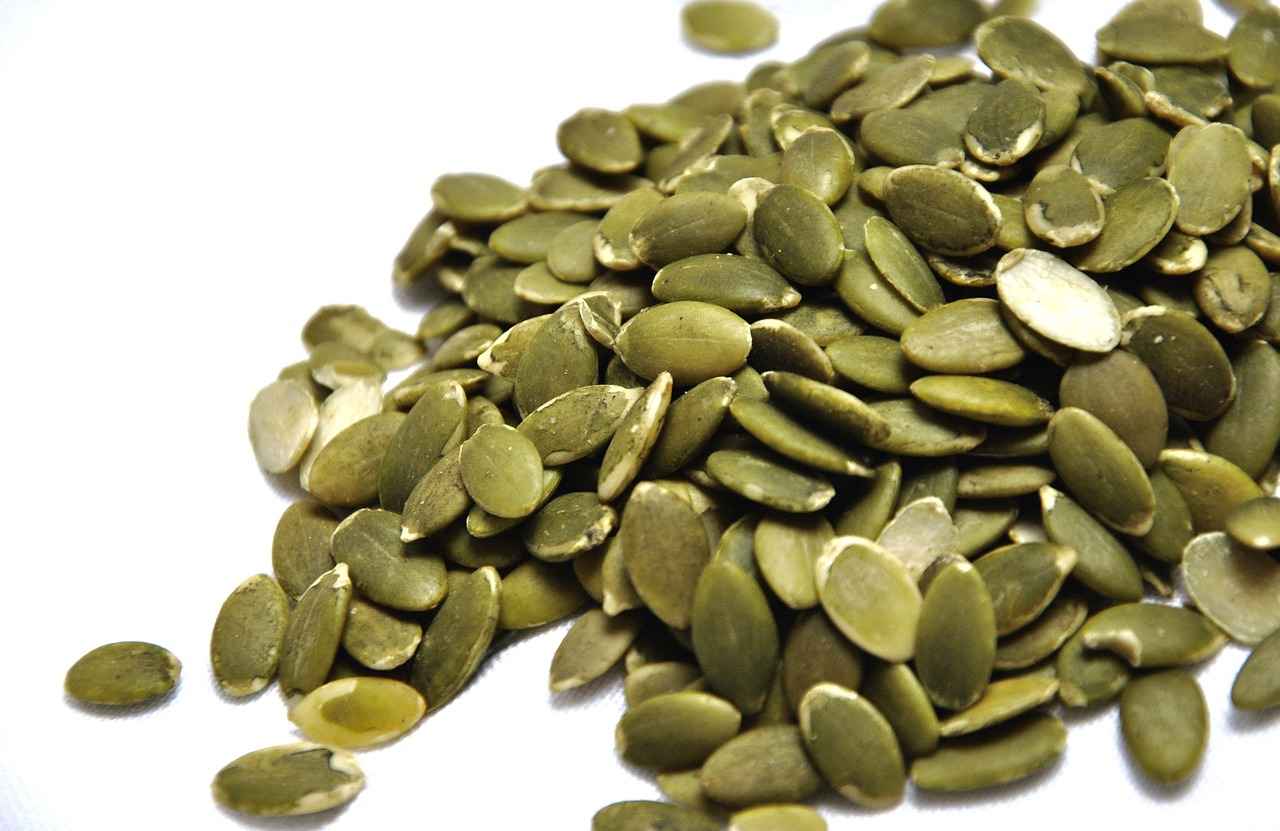
Can You Use Chia Seeds in Baking?
Chia seeds have gained popularity not only as a health food but also as a versatile ingredient in the kitchen. When it comes to baking, these tiny seeds can be a game-changer, offering both moisture and nutritional benefits to your favorite recipes. In this section, we will explore the best practices for incorporating chia seeds into your baked goods, ensuring you maximize their potential.
Why Use Chia Seeds in Baking?
Chia seeds are rich in omega-3 fatty acids, fiber, and protein, making them a nutritious addition to any baked item. They can also help retain moisture, leading to softer and more flavorful products. Additionally, chia seeds serve as a natural binding agent, making them an excellent substitute for eggs in vegan baking.
How to Incorporate Chia Seeds into Your Baked Goods
- Chia Seed Gel: To use chia seeds as an egg replacement, mix 1 tablespoon of chia seeds with 2.5 tablespoons of water. Allow it to sit for about 15 minutes until it forms a gel-like consistency. This can replace one egg in your recipes.
- Direct Addition: You can also add whole or ground chia seeds directly to your batter or dough. A good starting point is to add 1-2 tablespoons per cup of flour used.
- Mixing with Dry Ingredients: For even distribution, mix chia seeds with your dry ingredients before combining them with wet ingredients. This helps prevent clumping and ensures an even texture.
Popular Baked Goods to Try with Chia Seeds
Chia seeds can be incorporated into a variety of baked goods. Here are some popular options:
- Muffins: Add chia seeds to muffin batter for a nutritious boost. They pair well with fruits like bananas and blueberries.
- Bread: Chia seeds can enhance the texture and nutritional profile of homemade bread. Consider adding them to whole grain or gluten-free recipes.
- Cookies: Experiment with adding chia seeds to cookie dough for added crunch and nutrition. They work particularly well in oatmeal cookies.
Tips for Successful Baking with Chia Seeds
- Hydration: Chia seeds absorb liquid, so you may need to adjust the liquid content of your recipes. Monitor the consistency of your batter and add more liquid if necessary.
- Storage: Store chia seeds in a cool, dry place to maintain their freshness. They can be kept in an airtight container for several months.
- Experiment: Don’t hesitate to experiment with different recipes. Chia seeds can be added to pancakes, waffles, and even savory baked goods like quiches.
Incorporating chia seeds into your baking not only enhances the nutritional value of your treats but also adds a unique texture. With these tips and ideas, you can easily start experimenting with chia seeds in your favorite recipes, enjoying both the health benefits and delicious flavors they provide.
Chia Seed Substitutes in Baking Recipes
If you’re exploring ways to make your baking vegan or simply want to add a nutritious twist to your recipes, chia seeds are a fantastic alternative to traditional ingredients like eggs and oils. Not only do they provide a healthy boost, but they also enhance the texture and moisture of your baked goods. Below, we delve into how to effectively use chia seeds as substitutes in your baking.
Chia seeds are rich in omega-3 fatty acids, fiber, and protein, making them a powerhouse ingredient in any kitchen. When mixed with water, they form a gel-like consistency, which can mimic the binding properties of eggs. This makes them an excellent choice for vegans or those with egg allergies.
When replacing eggs with chia seeds in your baking, the general rule of thumb is to use 1 tablespoon of chia seeds mixed with 2.5 tablespoons of water to replace one egg. Here’s how to prepare it:
- Grind the chia seeds in a blender or coffee grinder for a finer texture.
- Mix the ground seeds with water and let it sit for about 10-15 minutes until it forms a gel.
- Use this gel in your recipe as a direct substitute for eggs.
Chia seeds can also replace oils in baking, adding moisture without the extra fat. To substitute for oil, use the same ratio as above: 1 tablespoon of chia seeds combined with 2.5 tablespoons of water. This mixture can be used in recipes for cakes, muffins, and breads.
To ensure the best results when baking with chia seeds, consider the following tips:
- Experiment with flavors: Chia seeds have a mild flavor, making them easy to incorporate into various recipes. Try adding them to chocolate chip cookies or banana bread for a nutritious twist.
- Adjust baking times: Recipes may require slight adjustments in baking times when using chia seeds, as they can add moisture to the batter.
- Combine with other ingredients: For optimal results, combine chia seeds with other binding ingredients like flour or oats.
Here are a few popular baked goods where chia seeds shine:
- Chia Seed Muffins: Add chia seeds to your favorite muffin recipe for added texture and nutrition.
- Banana Bread: Replace eggs with chia gel for a moist and flavorful loaf.
- Chocolate Chip Cookies: Incorporate chia seeds for a healthy twist on this classic treat.
Incorporating chia seeds into your baking not only enhances the nutritional profile of your treats but also opens up a world of culinary possibilities. With the right ratios and techniques, you can easily replace eggs and oils while still enjoying delicious, moist baked goods. So, the next time you’re in the kitchen, consider reaching for chia seeds as a versatile and healthy substitute!
Popular Baked Goods with Chia Seeds
Chia seeds have gained immense popularity in the culinary world, especially in baking. Their unique properties make them an excellent addition to various baked goods, not only enhancing nutritional value but also providing a delightful texture. Let’s explore how you can incorporate chia seeds into your favorite baked items.
- Muffins: Adding chia seeds to muffins can elevate their health quotient. Whether you’re making blueberry, banana, or chocolate chip muffins, you can mix in a couple of tablespoons of chia seeds. They absorb moisture, making the muffins more moist and fluffy.
- Bread: Chia seeds can be included in homemade bread recipes. They act as a binding agent, helping to retain moisture. Consider adding them to whole grain or gluten-free bread for an extra crunch and a boost of omega-3 fatty acids.
- Cookies: Want to make your cookies healthier? Incorporate chia seeds into your cookie dough. They can replace eggs in vegan recipes or simply add a nutritional punch to traditional recipes. Chocolate chip cookies with chia seeds are a delightful treat!
- Pancakes and Waffles: Enhance your breakfast by adding chia seeds to pancake or waffle batter. They not only add a slight crunch but also increase the fiber content, making your breakfast more filling and nutritious.
- Brownies: Chia seeds can be used to create fudgy brownies. When mixed with water, they form a gel-like consistency that can replace fats or eggs in recipes, resulting in a rich, moist texture.
When using chia seeds in baking, it’s important to consider the ratio. A common guideline is to mix one tablespoon of chia seeds with three tablespoons of water to replace one egg. This mixture can be added to your batter along with other ingredients.
Another exciting way to incorporate chia seeds is by creating chia seed jam. Simply cook down your favorite fruits, add chia seeds, and let it sit to thicken. This can be used as a filling for pastries or a topping for breads and muffins.
In conclusion, chia seeds offer a versatile and nutritious addition to a wide array of baked goods. Their ability to improve texture and provide health benefits makes them a must-try ingredient for both amateur and professional bakers. Explore these options and enjoy the delightful fusion of taste and health!
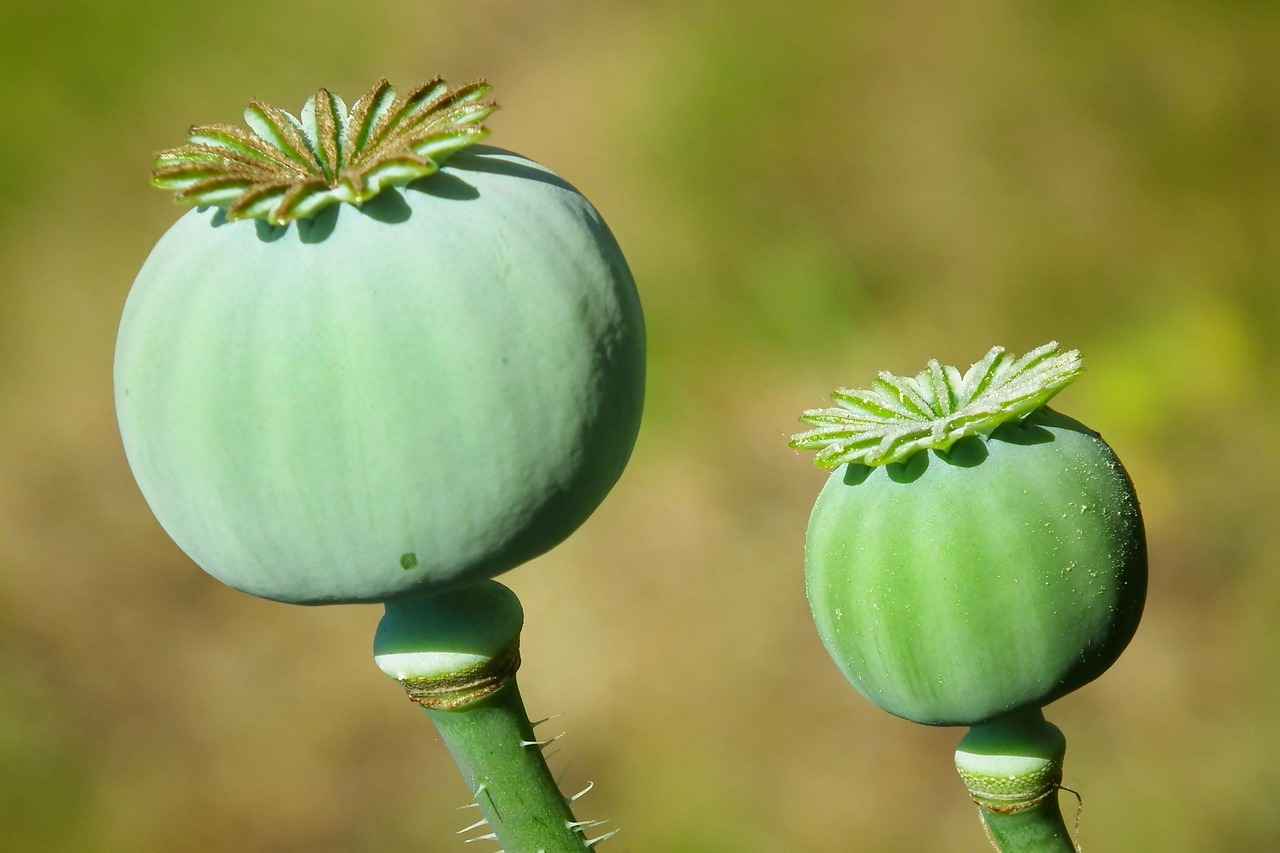
Are There Any Health Considerations with Chia Seeds?
Chia seeds have gained immense popularity as a superfood, celebrated for their rich nutrient profile and versatility in various dishes. However, as with any food, it is essential to consider the potential health implications associated with their consumption. While chia seeds are generally safe for most individuals, some may experience digestive discomfort or other side effects. Understanding these health considerations is crucial for responsible consumption.
Despite their numerous health benefits, some people may encounter digestive issues when consuming chia seeds. These seeds are high in fiber, which can lead to bloating, gas, or even diarrhea if consumed in large quantities or without adequate hydration. It is vital to introduce chia seeds gradually into your diet, especially if you are not accustomed to high-fiber foods.
- Start Slow: Begin with a small amount, such as one teaspoon, and gradually increase to the recommended serving size of one to two tablespoons.
- Hydrate: Always soak chia seeds in water or another liquid before consumption. This helps them expand and reduces the risk of digestive discomfort.
- Monitor Your Body: Pay attention to how your body reacts after consuming chia seeds. If you experience any adverse effects, consider reducing your intake.
While chia seeds are beneficial for many, certain individuals should exercise caution. Those with digestive disorders, such as irritable bowel syndrome (IBS) or inflammatory bowel disease (IBD), may find that chia seeds exacerbate their symptoms. Additionally, individuals on blood-thinning medications should consult a healthcare professional before adding chia seeds to their diet, as these seeds are high in omega-3 fatty acids, which can affect blood clotting.
It is always advisable to seek guidance from a healthcare professional if you have specific health concerns or dietary restrictions. A registered dietitian or a doctor can provide personalized advice tailored to your individual needs, helping you safely incorporate chia seeds into your diet.
Moderation is key when incorporating chia seeds into your meals. Overconsumption can lead to digestive issues and other health concerns. Stick to the recommended serving size and ensure you are drinking plenty of fluids throughout the day. Keeping a food journal can also help you track your intake and any symptoms you may experience.
In conclusion, while chia seeds offer numerous health benefits, it is essential to approach their consumption mindfully. By understanding the potential side effects and practicing responsible consumption, you can enjoy the nutritional advantages of chia seeds without compromising your digestive health.
How to Avoid Chia Seed Overconsumption
Chia seeds are a popular superfood known for their numerous health benefits, but moderation is essential when incorporating them into your diet. Understanding how to avoid overconsumption can help you enjoy their nutritional advantages while minimizing potential side effects.
The typical recommended serving size for chia seeds is about 1 to 2 tablespoons per day. This amount provides a good balance of nutrients without overwhelming your digestive system. Exceeding this amount may lead to discomfort, including bloating or gastrointestinal issues.
Chia seeds are rich in fiber, which is beneficial for digestion. However, consuming too many can lead to excessive fiber intake, resulting in digestive distress. It’s crucial to listen to your body and adjust your intake accordingly. Start with a smaller amount and gradually increase it to see how your body responds.
- Measure Your Servings: Use a measuring spoon to ensure you are not exceeding the recommended serving size.
- Stay Hydrated: Chia seeds absorb a significant amount of water. Make sure to drink plenty of fluids when consuming them to prevent dehydration and digestive issues.
- Mix with Other Ingredients: Incorporate chia seeds into meals with other ingredients, such as yogurt or smoothies, to balance your nutrient intake.
- Be Mindful of Other Fiber Sources: If you are consuming other high-fiber foods, consider reducing your chia seed intake to maintain a balanced diet.
Incorporating chia seeds into your meals can be beneficial when done thoughtfully. Here are some practical ideas:
- Add to Breakfast: Sprinkle chia seeds on oatmeal or mix them into smoothies for a nutritious boost.
- Use in Baking: Substitute chia seeds for eggs in recipes or add them to muffins and bread for added texture and nutrition.
- Make Chia Pudding: Soak chia seeds in milk or a milk alternative overnight to create a delicious pudding.
If you have specific health concerns or dietary restrictions, it’s wise to consult with a healthcare professional. They can provide personalized advice on how to incorporate chia seeds into your diet safely and effectively.
In summary, while chia seeds are a nutritious addition to your diet, practicing moderation is crucial. By understanding recommended serving sizes and following practical tips, you can enjoy the benefits of chia seeds without the risk of overconsumption.
Consulting with a Healthcare Professional
When considering the incorporation of chia seeds into your diet, it is essential to recognize that every individual has unique health needs and dietary restrictions. This is where the expertise of a healthcare professional becomes invaluable. Consulting with a qualified healthcare provider can offer personalized insights and recommendations tailored to your specific health conditions.
Why Consult a Healthcare Professional?
- Personalized Guidance: A healthcare professional can assess your overall health, existing medical conditions, and dietary habits to provide tailored advice on how to safely incorporate chia seeds into your meals.
- Understanding Nutritional Needs: Different individuals have varying nutritional requirements. A healthcare provider can help you understand how chia seeds fit into your unique dietary profile, ensuring that you receive the maximum benefit.
- Managing Dietary Restrictions: If you have any food allergies, intolerances, or specific dietary restrictions, a professional can guide you on the best ways to include chia seeds without compromising your health.
Potential Health Concerns
While chia seeds are generally safe for most people, they can cause digestive issues for some individuals. For example, consuming excessive amounts can lead to bloating or discomfort. A healthcare professional can help you determine the appropriate serving size based on your individual digestive health.
How to Discuss Chia Seeds with Your Healthcare Provider
- Be Open About Your Diet: Share your current eating habits and any supplements you are taking. This information will help your provider give you the best advice.
- Ask Specific Questions: Inquire about the best ways to prepare chia seeds, potential interactions with medications, and any recommended serving sizes.
- Discuss Health Goals: Whether you aim to improve your heart health, manage weight, or boost energy levels, your healthcare professional can help you align chia seed consumption with your health objectives.
Incorporating Chia Seeds Safely
Once you have consulted with a healthcare professional, you can confidently integrate chia seeds into your diet. Consider starting with small amounts, such as a tablespoon added to smoothies or yogurt, and gradually increase as tolerated. This approach not only allows your body to adjust but also helps you monitor any potential side effects.
In conclusion, while chia seeds offer numerous health benefits, it is crucial to approach their incorporation into your diet thoughtfully. By consulting with a healthcare professional, you can ensure that your use of chia seeds aligns with your personal health needs and dietary goals. This proactive step will help you enjoy the nutritional advantages of chia seeds while minimizing any risks associated with their consumption.
Frequently Asked Questions
- What are the health benefits of chia seeds?
Chia seeds are packed with nutrients! They are high in omega-3 fatty acids, fiber, and protein, making them a fantastic addition to your diet. These tiny seeds can help improve digestion, support heart health, and provide sustained energy throughout the day.
- How can I incorporate chia seeds into my breakfast?
You can add chia seeds to your breakfast in many delicious ways! Consider mixing them into smoothies for a thick texture, or try making chia seed pudding by soaking them overnight in milk or a dairy-free alternative. They also work well sprinkled on top of yogurt or oatmeal!
- Can I use chia seeds as an egg substitute in baking?
Absolutely! Chia seeds can be an excellent egg substitute. To replace one egg, simply mix 1 tablespoon of chia seeds with 2.5 tablespoons of water and let it sit for about 15 minutes until it forms a gel-like consistency. This works well in many baking recipes!
- Are there any side effects to consuming chia seeds?
While chia seeds are generally safe, some people may experience digestive issues if consumed in large quantities. It’s important to start with a small amount and drink plenty of water to help with digestion. Moderation is key!
- How should I store chia seeds for maximum freshness?
To keep your chia seeds fresh, store them in an airtight container in a cool, dark place. They can also be kept in the refrigerator for even longer shelf life. Just make sure to check for any signs of spoilage before use!

